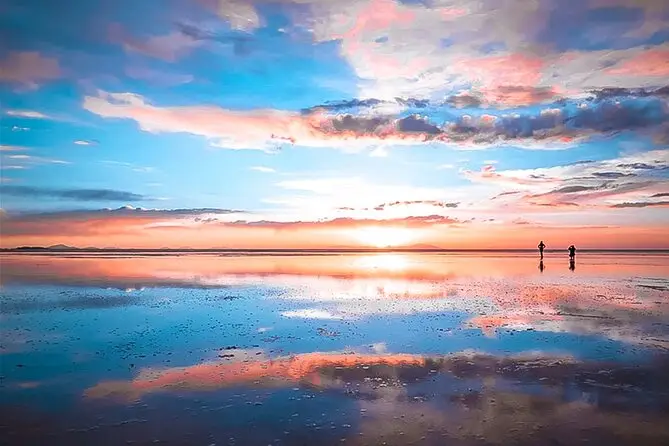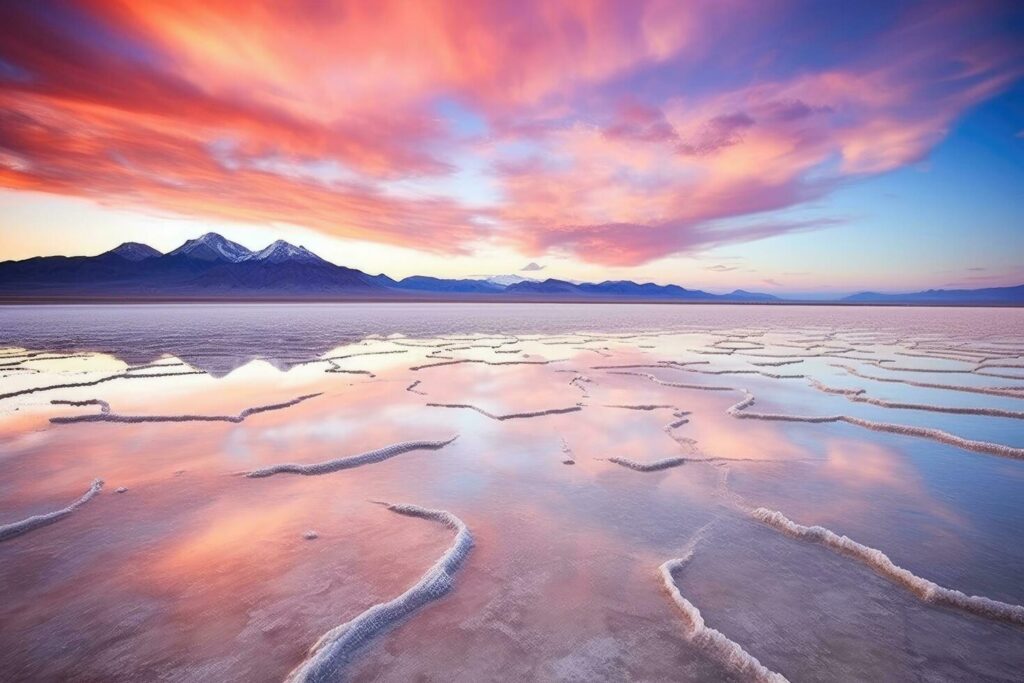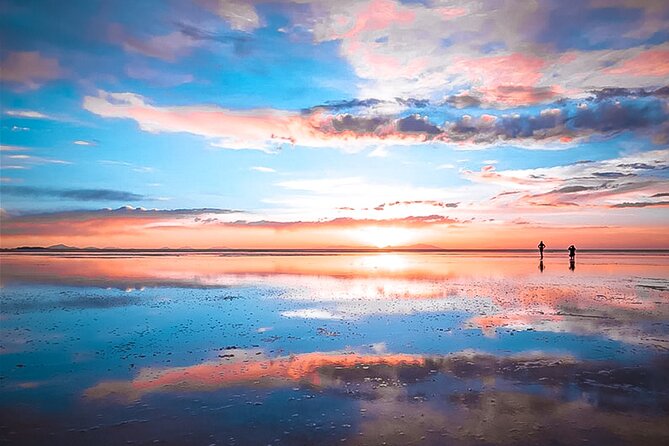Salar de Uyuni, the world’s largest salt flat, is situated in southwest Bolivia in the Daniel Campos Province, Potosí, near the crest of the Andes. Renowned as the flattest place on Earth, Salar de Uyuni is the legacy of a prehistoric lake that evaporated, leaving behind a vast desert-like landscape of bright white salt, rock formations, and cactus-studded islands. Covering an area of 10,582 square kilometers and reaching a depth of 130 meters, this unique geographical wonder derives its name from the Spanish word “Salar,” meaning salt flat. Salar de Uyuni translates to “salt flat with enclosures.”
The formation of Salar de Uyuni occurred when a prehistoric lake, Lago Minchin, once covering much of southwest Bolivia, dried up. Beneath its thick salt crust lie vast reserves of lithium-rich brine, making up around 70% of the world’s lithium supply.
Salar de Uyuni is a very safe destination for tourists, who can enjoy a pleasant stay. Despite Bolivia being one of the least developed countries in South America, it boasts a low crime rate. The salt flats also serve as a significant transport route across the Bolivian Altiplano. However, the salt flats can be hazardous due to the shining white salt and other minerals that cover the ground.
This area is a prime breeding ground for various species of flamingos. In November, visitors can observe Chilean, Andean, and James’s flamingos. Besides flamingos, the Salar islands are home to 80 other bird species, including the horned coot, Andean goose, and Andean hillstar. Other wildlife includes the Andean fox, or culpeo, and viscachas, a type of rabbit.
The salt from these flats is also mined for use in food. Visiting Salar de Uyuni is worthwhile due to its breathtaking beauty and vast expanse of 4,086 square miles. There are numerous activities to enjoy, such as finding the “Eye of the Salt,” visiting the Dakar Monument, and experiencing the world’s largest mirror effect during the rainy season. The salt flat has also been used as a filming location for movies such as “Star Wars: The Last Jedi,” “The Fall,” “The Unseen,” and “Salt and Fire.”
Weather in Salar de Uyuni
Salar de Uyuni has a humid climate with long, comfortable, and partly cloudy summers. Winters are short, very cold, dry, and mostly clear, with temperatures ranging from 26°F to 69°F, rarely dropping below 23°F or rising above 74°F. The wet season, which runs from December to April, is the best time to witness the magical mirror effect caused by a thin layer of rainwater covering the salt. The area receives only about 5 inches of rain per year, with February and March seeing the most rainfall, turning Salar de Uyuni into a giant knee-deep puddle. Therefore, the ideal time to visit is between September and October, or between December and April for the wet salt flats.
Tourism in Salar de Uyuni
Salar de Uyuni is a popular tourist destination, leading to the construction of more hotels in the area. Due to a lack of traditional construction materials, many structures, including walls, roofs, and furniture, are made from salt blocks cut from the Salar. The first salt hotel, Palacio de Sal, was built between 1993 and 1995 in the middle of the salt flat and became a popular tourist attraction. However, it had to be demolished due to sanitation issues, such as waste collection and environmental pollution. Another notable attraction is the Train Cemetery, located 3 km from Uyuni and connected by old train tracks. Uyuni city once served as a distribution hub for trains carrying minerals to Pacific Ocean ports.


